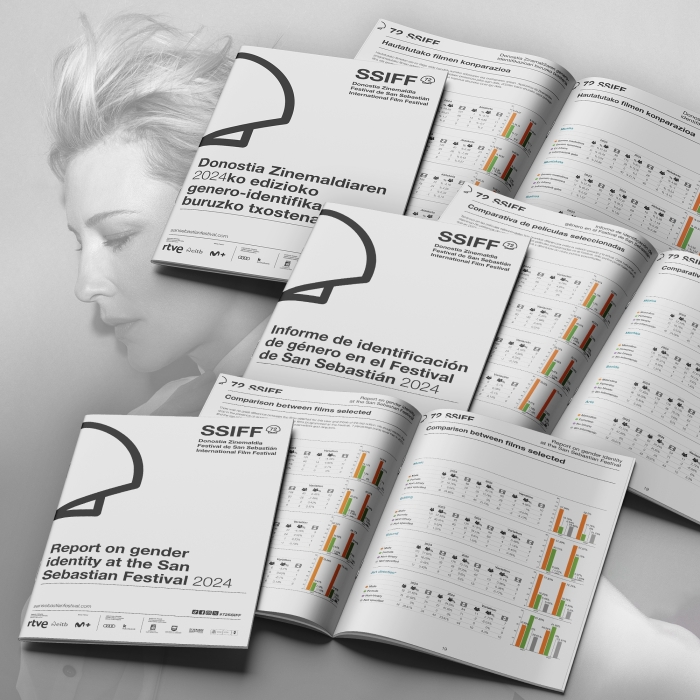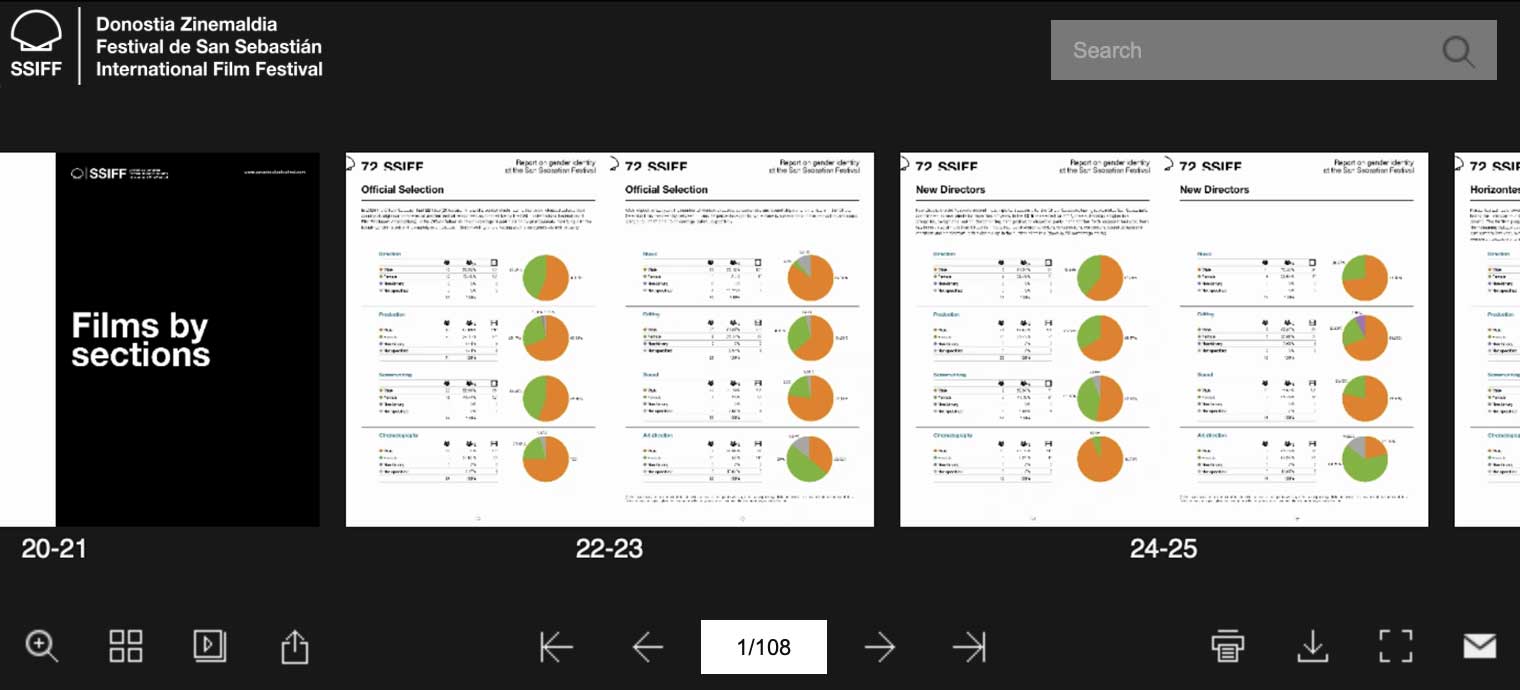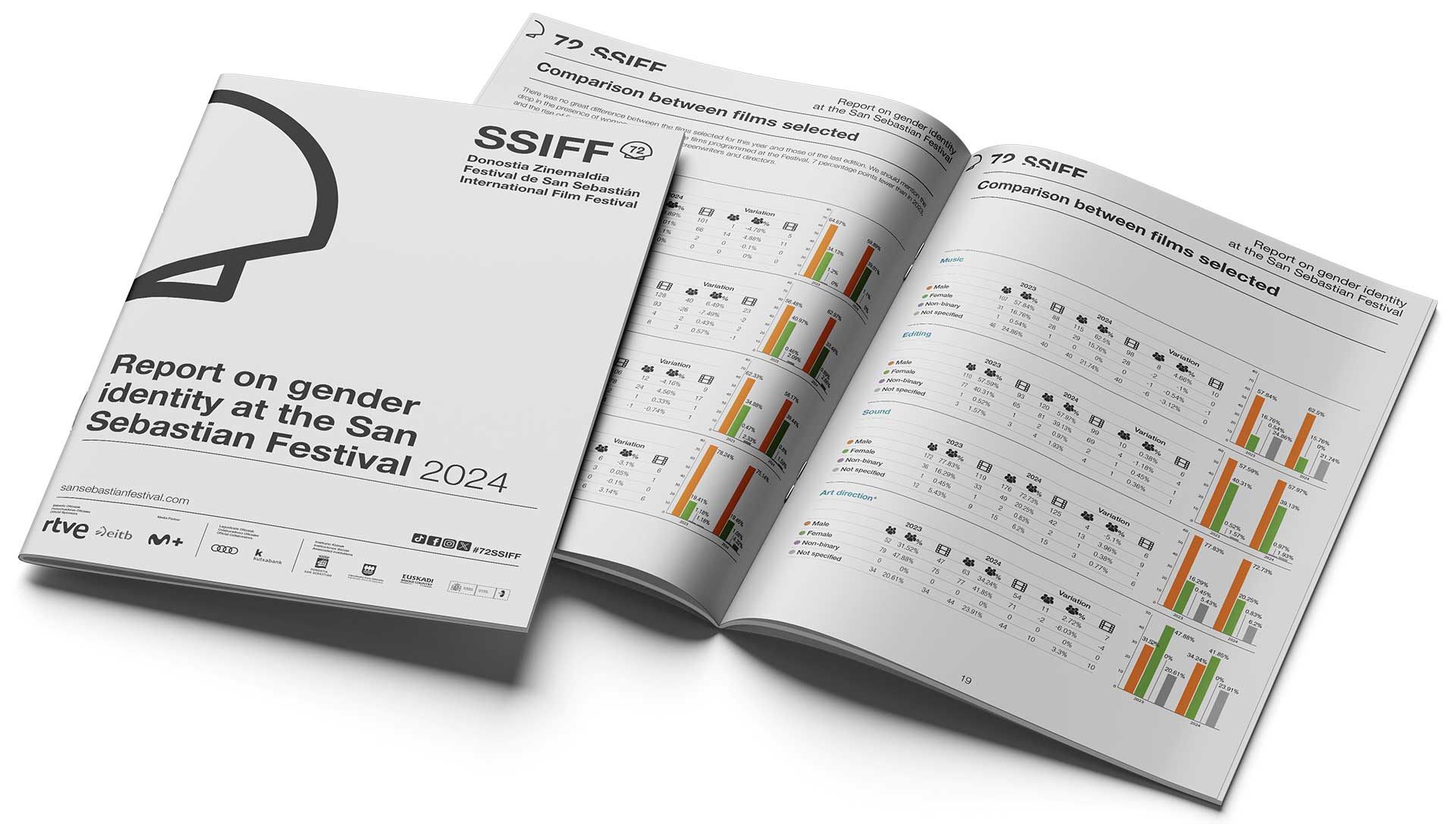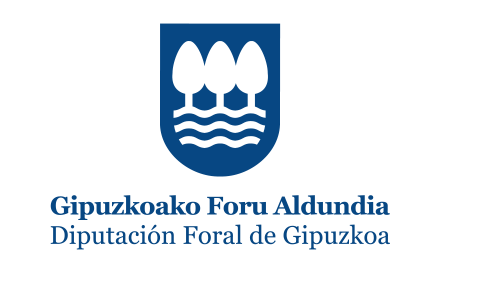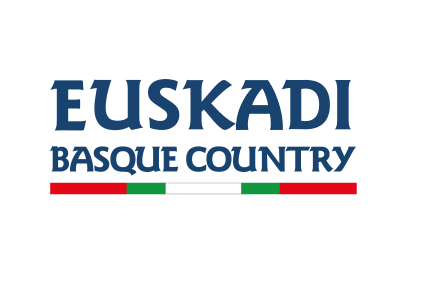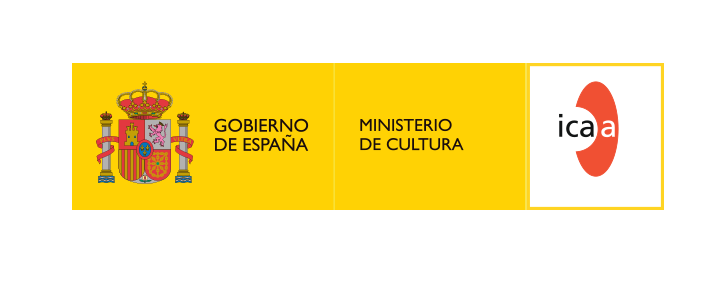For the sixth year running, the San Sebastian Festival publishes a report from the gender perspective in the endeavour to obtain as precise an X-ray as possible of the consideration and involvement of women professionals in the film industry. Compiling this report every year highlights a sluggishness in the incorporation of women to audiovisual productions. Scarcely any changes have been recorded compared to previous editions, although we can confirm the consolidation observed with respect to certain trends and the existence of others that are starting to make their mark.
The report includes all of the films viewed by the San Sebastian Festival selection committee, standing at more than 4,500, thanks to which we can obtain an overall impression of the year’s production. Analysed from the gender perspective, in the eight categories examined (directing, production, screenplay, cinematography, music, editing, sound and art direction) those identifying with the male gender are in the majority – with percentages ranging from 57% to 75%. This refers to all categories, with the exception of art direction. The least balanced areas are, in this order, production, screenplay, editing and directing.
Among the productions finally selected for the Festival, the percentages of authorship by gender are similar with respect to all films viewed; however, there are more women directors (39%), screenwriters (39%), editors (39%), sound (20%) and art directors (41%) in the crews of the selected films (3-6 percentage points higher than in the total viewed). On the other hand, there are fewer women producers (33%).
Generally speaking, there is a slight rise in the presence of women directors and screenwriters, a very slight increase in the number of women in the sound departments, who rarely amount to more than 20%, and a drop in the participation of women producers and editors, figures which will require analysis over time to establish whether they do in fact indicate some kind of change or are simply a passing phenomenon.
It is important to note that Perlak, a section showcasing the films to have enjoyed the greatest international success of the year, to have received Oscar nominations, or to have their release in commercial cinemas on the highest number of screens is, with Culinary Zinema – the section dedicated to the cinema and gastronomy – the competitive section to show, year after year, the least balanced percentages from the gender point of view, far removed from the overall figures for films viewed and selected and from the other sections.
The figures for Nest, a selection of short films by students from film schools all over the world, show not only parity at film schools in the fields of directing, production and screenwriting, but that the number of women cinematographers and music composers is on a par with that of professionals in the academic phase. However, this balance clearly falls apart in the professionalisation process.
In the field of Basque productions, the trend of recent years continues: an approximation to parity in the categories of directing and screenwriting, and a participation of women professionals higher than the Spanish and overall average.
Regarding the representation of non-binary persons, although their presence is small in the total number of films viewed by the Festival (between 1% of sound professionals and 2% of filmmakers), it is particularly visible in some sections, linked to the early days at film school and films at the project stage and works in progress, a factor which would seem to suggest a change in the new generations of film industry professionals: non-binary persons have their representation in all of the trades analysed in Nest, the Europe-Latin America Co-Production Forum and Ikusmira Berriak, and in practically all artistic categories of WIP Latam and WIP Europa.
